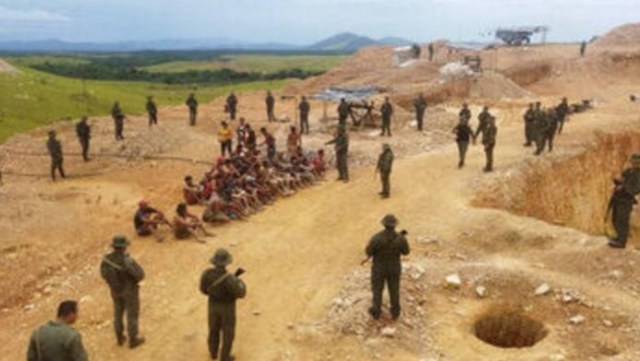
The discovery of three mass graves in Venezuela’s eastern state of Bolívar points to how sinister the increase in disappearances in the country’s illegal mining epicenter has become.
By Insight Crime
Dec 05, 2022
Human remains were found in mining areas around southern Bolívar on three separate occasions in November, according to General Domingo Hernández Lárez, head of the Venezuelan Armed Forces’ Strategic Operational Command, writing on Twitter.
While Hernández Lárez did not specify how many bodies were found, he attributed the deaths to Organización R (R Organization), a criminal group that controls illegal mines and communities around the town of Tumeremo in the municipality of Sifontes.
These discoveries came months after a report by Venezuela’s Commission for Human Rights and Citizenship (Comisión para los Derechos Humanos y la Ciudadanía – Codehciu) stated that at least 37 people had gone missing in Bolívar’s mining areas between September 2021 and April 2022.
Some of these people disappeared while on their way to the mines, while others allegedly went missing during armed clashes, or after being kidnapped. Others did not return after going into the mining territories to sell merchandise.
The number of people vanishing in these areas is increasing. In all of 2021, Codehciu registered 26 people as missing in Bolívar’s mining areas, up from 12 in 2020.
Most of these people are likely dead, according to the Venezuelan Observatory of Violence (Observatorio Venezolano de Violencia – OVV), which noted that disappearances in the Orinoco Mining Arc — a Venezuelan government mining initiative that includes Bolívar state — regularly translate into homicides.
The OVV’s 2021 annual report pointed out that three of the five most violent municipalities in Venezuela are in Bolívar’s mining region, including El Callao, with a homicide rate of 511 per 100,000 people, Sifontes with 189, and Roscio with 125. At least one of the mass graves reported by Hernández Lárez was in Sifontes, the area with the highest number of recorded disappearances in 2021.
The increase in disappearances in Bolívar state is related to armed groups that use extreme violence to maintain control of mining areas, with the victims often from floating populations who come to the mines to look for work.
The creation of the Orinoco Mining Arc Strategic Development Zone in 2016 opened the doors to a constant flow of people traveling to Bolívar state in search of gold, as well as criminal groups.
InSight Crime has confirmed that in addition to the R Organization, Bolívar plays host to a number of highly organized criminal groups, including the Tren de Guayana, the Claritas Syndicate, and the Negro Fabio gang.
These criminal groups control the illegal extraction of gold and other minerals through harsh punishments, including torture, mutilations, and executions, according to InSight Crime investigations.
“They kill thanks to this bloody rule of law which has become normalized in that area,” said a human rights activist working for the Andrés Bello Catholic University in Venezuela, who spoke on condition of anonymity.
In order to main power, criminal groups in the area control how workers can move around and communicate with the outside world.
Upon arrival, the gangs strip these workers of their cell phones.
“If they sign for a year to two years, for that entire time, they cannot use their cell phones to maintain contact with their relatives,” explained the human rights coordinator.
Due to this, victims of these gangs join the lists of disappeared and can take a long time to be found or even be reported as missing.
…
Read More: Insight Crime – Mass Graves in Venezuela Connected to Disappearances in Illegal Mining Hub
…

